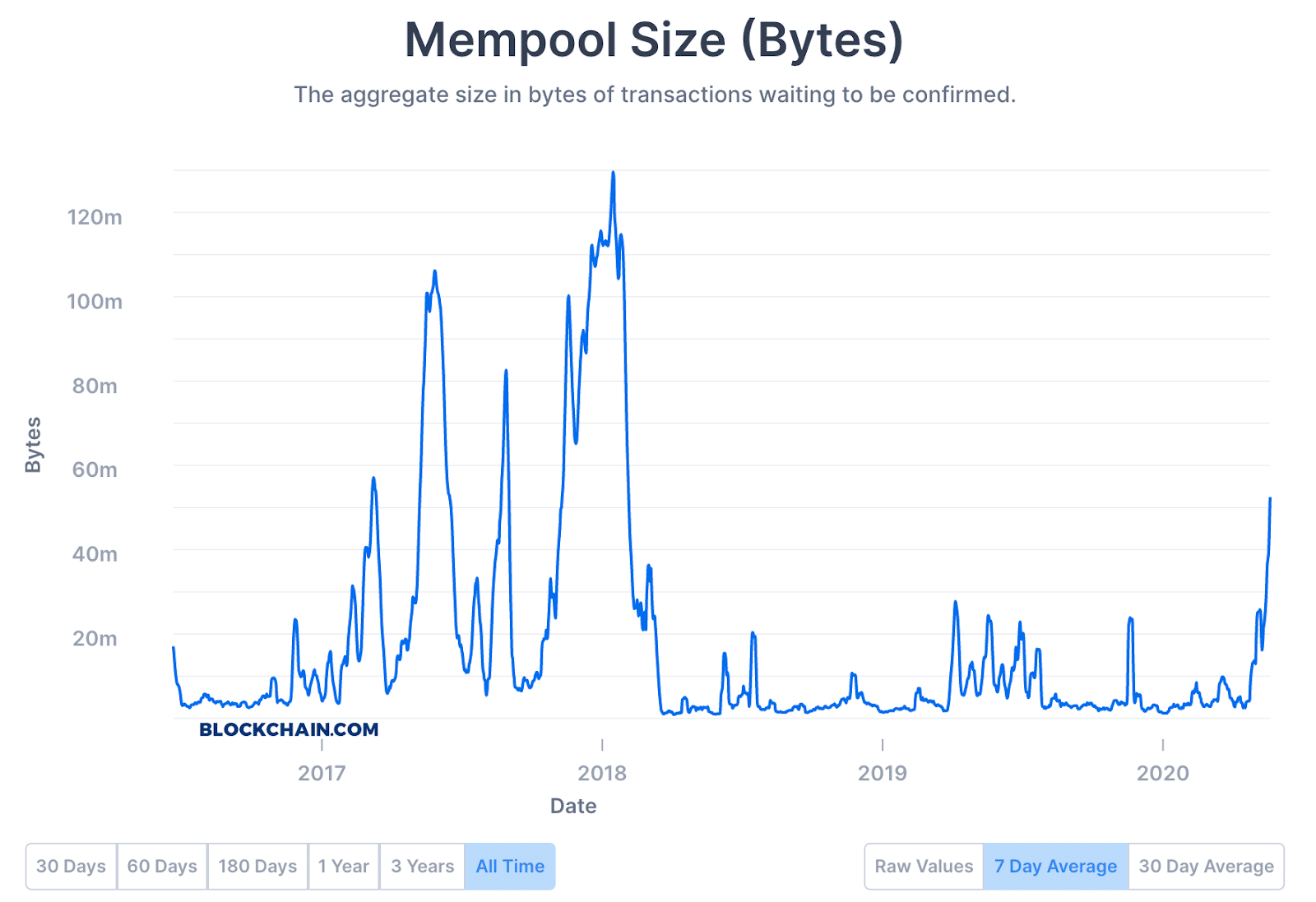As the cryptocurrency market expands and welcomes new users it is important for them to know all the terminology and parts of the Bitcoin (BTC) network and one of the many words that appearing often the confuse many is what we refer to as the “bitcoin mempool“.
The Bitcoin mempool is the number of unconfirmed transactions on the Bitcoin network. Every single time that a transaction is processed, it waits in the mempool until it is processed by a miner. Miners are one of the most important participants on the BTC network allowing transactions to be processed and confirmed.
Each network works in a different way and the mempool for Bitcoin is independent of other blockchains.
If you want to know more information about other networks, the best thing to do would be to search for their own mempool. Digital assets such as Ripple do not really need one considering their transactions are processed almost instantly by a small group of
The Bitcoin Mempool Basic’s
The mempool becomes a very clear and important tool for us to understand how the BTC network is behaving, to understand if there is a lot of congestion, and whether it would be necessary to increase the fees for transactions to be processed faster by miners.
Every ten minutes, each block on the BTC network processes a large number of transactions. Miners make all the necessary work to process and confirm these transactions by using ASIC miners. These ASIC miners are computers that have a lot of computing power and help the network be secure and keep it running.
At the time of writing this article, the mempool size reached the largest value on 7 days rolling average since early February 2018, when the Bitcoin network was reducing its activity after the massive bull run of 2017.

The higher the mempool size, the higher the network traffic. This could lead to longer waiting times when processing a transaction and also higher fees if traders and users want to process a BTC transaction on the network.
Once transactions are included in a block, it disappears from the mempool, allowing the network to become less congested. This would eventually reduce the fees you use to process a transaction and reduce the time it would need to be added to a block. Remember, the less congested the mempool, the better would be for you to perform a transaction.
How the Mempool Can Help Us?
The mempool can be a great tool for us to understand when it’s cheaper or more expensive to process a transaction.
Smaller users and retail individuals that want to make a small transfer using Bitcoin may not find it useful to do so when the network is congested.
However, it may be a great idea to process all the transfers when the mempool is close to being empty. This would provide you with lower transfer costs and faster transaction times. Miners would be glad to take your transaction with the standard fee if the mempool is empty.
By looking at the mempool you will also understand whether it is more convenient to use another digital asset to process a transfer or use second-layer solutions such as the Lightning Network to avoid fees and congestion.
Understanding Fees and Mempool

Fees are a very important thing about cryptocurrencies. Indeed, they can change the way you interact with each of the blockchain networks available in the market. When fees are high, it shows that there is a large number of trades on that specific network.
Of course, each of these blockchains do not have unlimited space for processing all the transactions users require. This is why fees work as a filter to process the transactions with the highest needs rather than prioritizing low fee transactions.
In many cases, as it already happened with Ethereum in the past, blockchain networks can be spammed. This is why fees become higher and reduce the incentives to use specific cryptocurrencies. When both Bitcoin and Ethereum were congested at the end of 2017 and the beginning of 2018, users moved into Litecoin (LTC), which offered yet low fees and fast transaction times.
The mempool would certainly be a useful tool for you to better understand how fees are affecting the market and how they could eventually help you make better decisions regarding the network you are using.
Moreover, this would push you and companies to ask some deeper questions: is my decentralized application working efficiently? Do we need so many transactions? Can this transaction be processed now or it can be postponed?
Conclusion
The mempool has been a great tool for users to understand how much congested a blockchain network is, specifically the Bitcoin network. During the 2017 bull run, a large number of users were processing transactions using Bitcoin. This changed after the bear market when BTC fell to $3,300 per coin in December 2018.

With the mempool, users and companies operating in the space will have clear information about which are the best steps to follow in case it is important to make a transaction. Furthermore, it is good for analysts to report activity and understand what is pushing the network forward during specific periods of time.





















